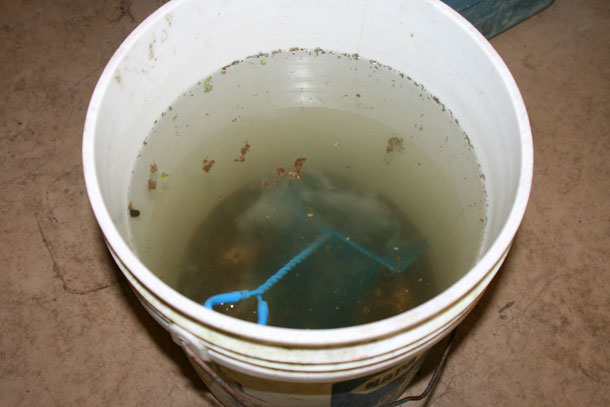The photo is a bucket of water and mulm from a cichlid vat that sat overnight. The milky cloud above and to the left of the net is a large number of Paramecium multimicronucleatum. This is the largest Paramecium and a single one is almost visible to the naked eye. And, as you can tell, swarms of them are easily seen.
Mulm collects on the bottoms of our vats. Since cichlids are large, they don’t eat the Paramecium and large populations grow in the mulm. When we need Paramecium to feed to the tiny fry of rainbowfish, anabantids, tetras, and barbs, we net out some mulm with a 10” brine shrimp net, place it in a 5-gallon bucket, add water, and let it sit overnight. The next morning we collect the Paramecium by pouring off the water containing them. The water is then poured into the tank containing the fry. The water is clean, at least if not allowed to sit too long, because the Paramecium are happily eating any bacteria growing on the mulm.
For us this is a painless and space-less way to raise a livefood for tiny fry. And it’s a lot less work than maintaining microworm and vinegar eel populations. Also, this method procures many more Paramecium than traditional methods and doesn’t require a jar and boiling peas or hay.


Leave a Reply